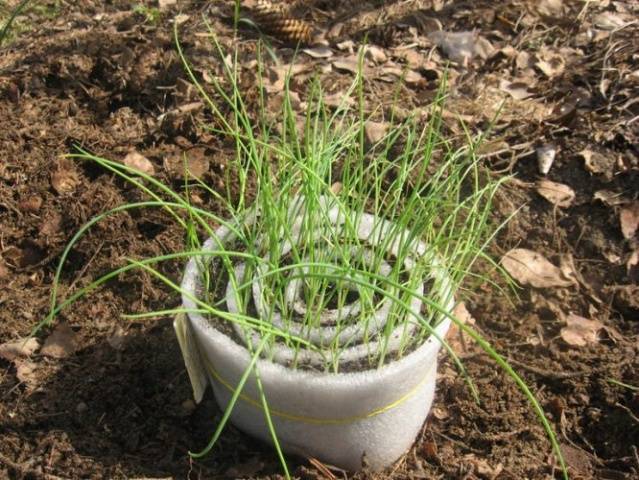Content
Almost all garden crops are annual and produce a harvest in the same season. The only exceptions are onions and garlic, which have a long growing season and are therefore grown in two stages. As a rule, in the first year, sets are obtained from onion seeds, and only at the end of the second season do gardeners harvest a full harvest - large heads of onions. But selection does not stand still, and today a new method of growing onions has become possible - seedlings.
About how to sow nigella onions for seedlings, when to plant it into the ground will be discussed in this article. Here the rules for sowing nigella will be described and alternative options for planting onions will be proposed.
Advantages of the seedling method
Typically, gardeners first sow nigella in order to collect small heads - sets - at the end of summer. Next spring, these annual bulbs are planted, from which by the fall they will grow into full-fledged heads, suitable for consumption and long-term storage.
The disadvantage of the two-year cycle is not only the time spent on the entire process. Very often, most of the sets spoil over the winter: the heads can fade, dry out or rot due to unsuitable storage conditions.
Some summer residents, trying to minimize the loss of planting material, sow nigella before winter. This method allows you to significantly reduce time and material costs, but also does not guarantee a 100% result. In order for onions to grow without problems, the climate in the region must be very stable. After all, nigella planted too early will simply dry out, and late planting threatens to freeze the seeds.
An alternative way to grow nigella onions is from seedlings. The use of this method became possible only with the development of modern onion varieties with a short growing season.
Some foreign hybrids are excellent for these purposes, such as the Odnoletniy Sibirsky, Exibishen, Strigunovsky, Myachkovsky, and Danilovsky varieties. It has been noticed that the best annual harvest is obtained from sweet and semi-sweet varieties of onions.
You can grow nigella onion seedlings in the same way as seedlings of garden vegetables (tomatoes, peppers, eggplants) or garden flowers. This method has its advantages:
- Possibility of growing onions in regions with harsh and cold climates.
- Obtaining large volumes of harvest from a small planting area.
- Saving planting material, because nigella seeds are spent several times less, and the yields are always better.
- Less shooting of onions, because the feathers of the sets are often shot due to unfavorable weather conditions or incorrectly chosen planting time.
- The best shelf life of annual bulbs, which can be stored for 6-9 months without problems.
For many gardeners, the most significant advantages of growing seedlings from nigella onion seeds are less labor costs and a reduction in time spent in the beds.
Growing annual turnips
Not all summer residents know how to sow nigella onions for seedlings. Practice shows that there is nothing particularly complicated in this matter; you just need to take into account some of the features of onion seedlings.
The seedling method of growing onions is suitable only for those who have small plots and grow the vegetable in limited quantities.
Definition of deadlines
First of all, you should learn about when to sow onion seeds to obtain seedlings. To answer this question accurately, you must carefully read the instructions on the bag of onion seeds - the growing season of a particular variety should be indicated there. Typically, annual onion varieties ripen within 120-130 days after the first shoots appear. Before transplanting into the ground, the seedlings must grow and become stronger; all this will take from one and a half to two months.
Onions are an unpretentious crop that can tolerate light frosts and unfavorable weather conditions. To get an early turnip harvest, you can plant seedlings in the ground at the end of April or at the beginning of May.
Considering everything said above, we can calculate The ideal time for sowing chives is early or mid-March. Earlier sowing is undesirable due to too short daylight hours and lack of sun - this will lead to stretching of the seedlings.
Nigella should be sown already in the middle or end of February, the seedlings should be artificially supplemented with light, and after being transferred to the ground, cover the beds with lutrasil or other non-woven material.
Preparatory work
Onion seeds are small black grains, which are popularly called “chernushka”. Before sowing, nigella must be prepared to increase the germination of seeds and speed up their germination.
Preparation of nigella involves pre-soaking it. For these purposes, some use a weak solution of potassium permanganate (1 gram of potassium permanganate per liter of water), in which the nigella is placed in a linen bag for no more than 45 minutes.
In most cases, soaking nigella in plain water at a temperature of 30-35 degrees is sufficient. To maintain the temperature, you can use a thermos or place a container with seeds on the radiator. You can keep black onion in warm water for a day.
After the preparatory activities, the nigella is dried by spreading the seeds in an even layer on a paper or cotton towel. This is necessary so that the small seeds become crumbly and are easier to separate from each other.
Planting nigella onions
It is convenient to sow nigella onion seeds in general plastic containers with sealed transparent lids, but, in principle, any container will do (cups, flower pots, plastic bottles cut lengthwise, etc.).
The soil for onion seedlings should be loose and nutritious. A substrate is prepared from turf soil, humus, sand and peat.You can improve the composition of the soil with dolomite flour, quicklime, wood ash - the acidity of the soil should be neutral.
Planting is carried out in several stages:
- The containers are filled with soil so that its layer is 7-8 cm.
- Water the soil with a weak solution of manganese, Bordeaux mixture or a fungicidal preparation to prevent seed contamination.
- Using a blunt object, make shallow grooves at a distance of 5 cm from each other.
- Using tweezers, lay out the nigella so that the intervals between the seeds are 3 cm (this way you won’t have to pick the onion seedlings).
- Sprinkle the nigella with a thin layer of dry soil and lightly press it down, as if patting it.
- Spray the ground with a spray bottle.
- Cover the container with a lid or film and put it in a warm place for germination.
As soon as the loops of onion seedlings appear (after 3-7 days), the container is placed on a window where there is a lot of light and the temperature is 18-20 degrees. You don’t have to remove the lid right away, but then wipe it daily to remove condensation.
It is also convenient to sow small nigella in special seedling cassettes or “snails”.
Growing nigella onions in “snails”
Onion seedlings are very fragile and delicate and must be handled with great care. To make their work easier, gardeners are coming up with alternative ways to grow onion seedlings, for example, in “snails”.
Sowing nigella onions in “snails”:
- strips measuring 15x40 cm are cut from the backing for the laminate (or other similar material);
- lay a layer of toilet paper on top;
- moisten the paper with water, spraying it from a spray bottle;
- stepping back 2 cm from the bottom edge of the strip, lay out the nigella evenly at intervals of 1-1.5 cm;
- now you need to roll the seed blank into a roll and secure it with an elastic band;
- place the “snail” in a thick plastic bag and put it in a warm place;
- after two weeks, the “snail” is carefully unfolded and the seeds are sprinkled with a layer of loose soil, sprayed with a spray bottle and placed in a tray.
Landing in the ground
Onion seedlings grown from seeds will get stronger by about 45-50 days after emergence - at this time they can be transferred to a permanent place. The most suitable time for planting chives in the beds is the beginning of May. By this time the site needs to be prepared.
Holes or shallow grooves are made in the fertilized and dug up soil. Onion seedlings look like young grass - thin green feathers. If nigella was sowed in common containers, the seedlings are carefully separated, trying not to damage the roots.
The distance between seedlings should be at least 5 cm, the depth of embedding the roots into the soil is 1-1.5 cm. After planting, the soil is slightly compacted around the stem. All that remains is to water the bed and lightly mulch it with peat or humus.
Conclusion
Growing onion seedlings from nigella is a painstaking and time-consuming task. This method is suitable for those who grow a limited amount of vegetables, breed interesting varieties, and try to get early harvests.When sowing nigella, you need to take into account that not all varieties of the crop can develop in one season - there are special annuals for the seedling method.
Details about planting nigella onions for seedlings are described in this video:
























